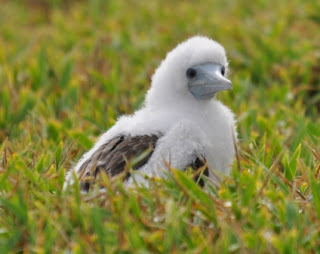.JPG) |
| This breaching Humpback welcomed us into Autralian waters |
After the wind swung and the seas built we were effectively
booted out of Huon
Island. It was against our will, as we loved it there
and I could have happily spent weeks counting and photographing the nesting
birds. Then the wind stayed in the SSW
so we could not stop at Chesterfield Reef which was likely to be another
amazing wildlife spot. So we had a week
at sea with perfect sailing breezes, but we couldn’t set full sail and carry on
because that would have meant making landfall in Australia on a weekend and the
officials make it prohibitively expensive when that happens. So we continued to shorten sail and leisurely
make our way west. Our autopilot motor
finally died shortly after the wind died, so we had to tie the tiller and hand
steer more than usual. We could have
arrived two days earlier than we did, but managed to slow ourselves down enough
to arrive at midnight on a Sunday.
Our arrival into Australian waters was heralded by a
wonderful show. Lots of breaching,
pectoral slapping and breeding Humpback Whales!
It is hard to believe that this amazing adventure has come
to an end, for now anyways. We have
mixed emotions as we start preparing to leave Narama for a while. What a magnificent journey it has been!
 |
| Lunch at sea |
 |
| Our sea berth, the lee cloth holds us in bed. |
Trip Stats Luganville, Vanuatu to Bundaberg, Autralia
Days on passage:
10.5
Total distance: 1101 nm
Average 24 hour run: 98 miles
Best day: 143 miles (en route to
Huon Island)
Worst day: 77 miles (en route to Bundaberg, when we had to
slow down)
Engine Hours:
42.7
Number of Humpback Whales seen en route:
12
Most interesting Bird Species: Southern Giant Petrel
 |
| Thank you for following us on Narama's Voyage |


.JPG)











.JPG)











